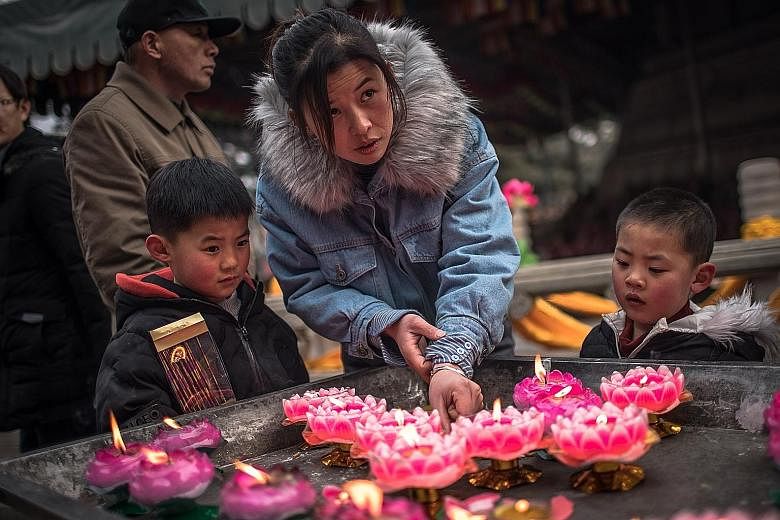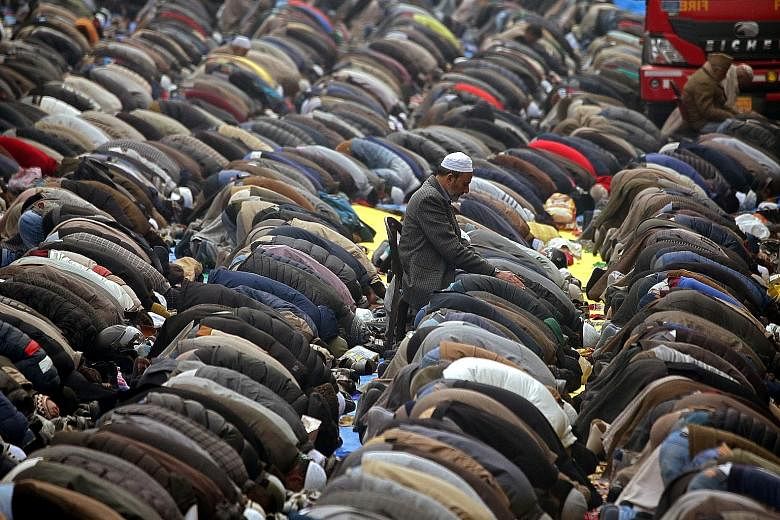The Chinese New Year kicked off on Tuesday as one of the most important holidays in Vietnam, South Korea, China and other Asian countries. Typically, it starts on the second new moon after the winter solstice.
On the Gregorian calendar, the civil calendar used in most countries, the Chinese New Year changes every year, as do the dates of holidays like Rosh Hashana, Diwali and Ramadan.
It can be easy to think of a calendar as a scientific given, or a reflection of the laws of the universe. In fact, as these holidays remind us, there are as many ways to track time as there are cultures and languages. Each calendar reveals something about how the people who created it relate to the world around them while also preserving rich cultural identities and memories.
Most timekeeping traditions track the movement of the sun, moon and stars. Others consider seasonal events, like the autumnal swarming of sea worms, used to orient each year in the Trobriand Islands off New Guinea, or the flowering of immortelle trees into hundreds of tiny vermilion flames, which marks the start of the dry season in Trinidad.
With any calendar, the basic question is which of the thousands, if not millions, of cycles in the world to follow, said Dr Kevin Birth, an anthropology professor at Queens College. Calendars "always come down to this cultural choice", he said, so using one system over another is ultimately a social contract, regardless of how scientifically accurate or sophisticated a calendar is.
A solar year - the time it takes earth to orbit the sun - lasts around 365 days, while a lunar year, or 12 full cycles of the moon, is roughly 354 days. Because of this discrepancy, a purely lunar calendar - like the Islamic, or Hijri, calendar - doesn't stay aligned with the seasons. Islam's holy month of Ramadan may fall in summer one year, and winter a number of years later.
To correct for seasonal drift, the Chinese, Hindu, Jewish and many other calendars are lunisolar. In these calendars, a month is still defined by the moon, but an extra month is added periodically to stay close to the solar year.
A solar calendar is useful for farming, fishing and foraging societies that need to plan ahead for particular times of the year. But a purely solar calendar, like the Gregorian, tells you nothing about the phases of the moon.
The Hijri calendar requires an observation of the early crescent moon to start a new month, and thus encourages paying attention to the cosmos. The Gregorian calendar can't be tracked in the sky, which might be why many Westerners are less aware of the moon and other natural phenomena, said Professor Sacha Stern, who teaches Hebrew and Jewish studies at University College London.
Major events on the calendar shape cultural identity. When Jews around the world celebrate Sukkot, a harvest festival, they are observing the timing of the harvest in Israel, and preserving a connection throughout the diaspora, Dr Birth said.
Holidays also structure personal and historical narratives. Some secular holidays in the United States centre on legacies of war, which fits "when you think that the United States also has the largest military budget in the world", Dr Birth said.
Chinese holidays usually emphasise family union and honouring ancestors, which aligns with the importance of filial piety.
Many ancient calendars, like the Chinese and Mesoamerican ones, build in fortune-telling, with prescriptions for when to build a house, get married, have a funeral and other life events. Similar calendars provide structure and comfort to people today.
Ms Britt Hart, an astrologer based in Philadelphia, said she thinks people can be drawn to horoscope-based calendars because they're seeking a grander sense of time and order in the universe.
In the context of history, staying connected to an alternative calendar can also be a form of resisting the mainstream, or maintaining an identity outside of it. When a calendar is imposed on a society, it usually has to do with politics and power. The ability "to say when the year will start, or decide that a religious festival should be celebrated at a particular time, can be quite useful for a politician", Prof Stern said.
The Gregorian calendar has been used as a global standard for only about a century, and is "very much a reflection of European commerce and colonialism", Dr Birth said. It has now been built into computer architecture, but that doesn't mean another calendar couldn't one day become dominant.
A Hijri calendar from the Gregorian year 2014 hangs in Dr Birth's office. On it, Christmas falls on 3 Rabi al-Awwal, the third day of the third month.
He loves the reminder that "holidays you think are stationary actually move, and those you think move are actually stationary". It shows "how cultural these things are, rather than natural", he said.
NYTIMES


